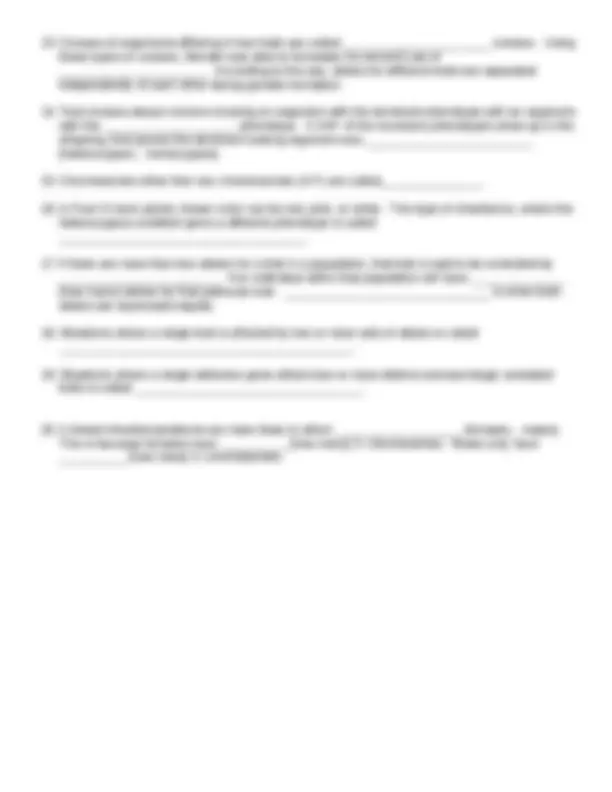Chapter 11: Mendelian Patterns of Inheritance
BIO111 Review Questions Name________________________________
1. The science that explains the stability of inheritance and variations of offspring from one
generation to the next is called __________________________.
2. When Gregor Mendel began his work, most plant and animal breeders believed that traits were
inherited by the ______________________ concept of inheritance, meaning the offspring’s
genetic makeup was intermediate to its parents.
3. Gregor Mendel developed the ________________________ theory of inheritance in the 1860’s.
Mendel’s theory got its name by being based on the existence of “hereditary units” that are now
called ____________________________________.
4. The organism chosen by Mendel to use in his experiments was the ____________. Since these
organisms usually self-pollinate, over generations Mendel was able to produce plants that would
produce the same type of offspring generation after generation. Such varieties were referred to
as being _______________________.
5. Mendel identified his original parent plants with the symbol ________. The first generation of
offspring were given the symbol_________. The offspring of these plants were given the symbol
___________.
6. The offspring produced from Mendel’s cross of a tall plant with a short plant produced:
a. A plant with intermediate height
b. All plants showed short heights
c. All plants showed tall heights
d. Some plants that were tall, some plants that were short
7. The offspring produced from Mendel’s cross of two F1 plants produced:
a. A plant with intermediate height
b. All plants showed short heights
c. All plants showed tall heights
d. Some plants that were tall, some plants that were short
8. A cross of a single trait is referred to as a _____________________ cross.
9. According to Mendel’s Law of Segregation, each individual has ______ [how many] factors
(genes) for each trait. Each gamete has _________ [how many] factors (genes) for each trait.
10.Applying modern terminology to Mendelian concepts, genes occur at specific places on
homologous chromosomes called a ____________________________.
11.Organisms whose alleles for a particular trait are identical are called __________ while
organisms whose alleles for a particular trait differ are called _____________________.
12.The term referring to the alleles an individual receives from the parents at fertilization is
_______________________. The term referring to the physical appearance resulting from the
alleles an organism has for a particular trait is __________________________.










